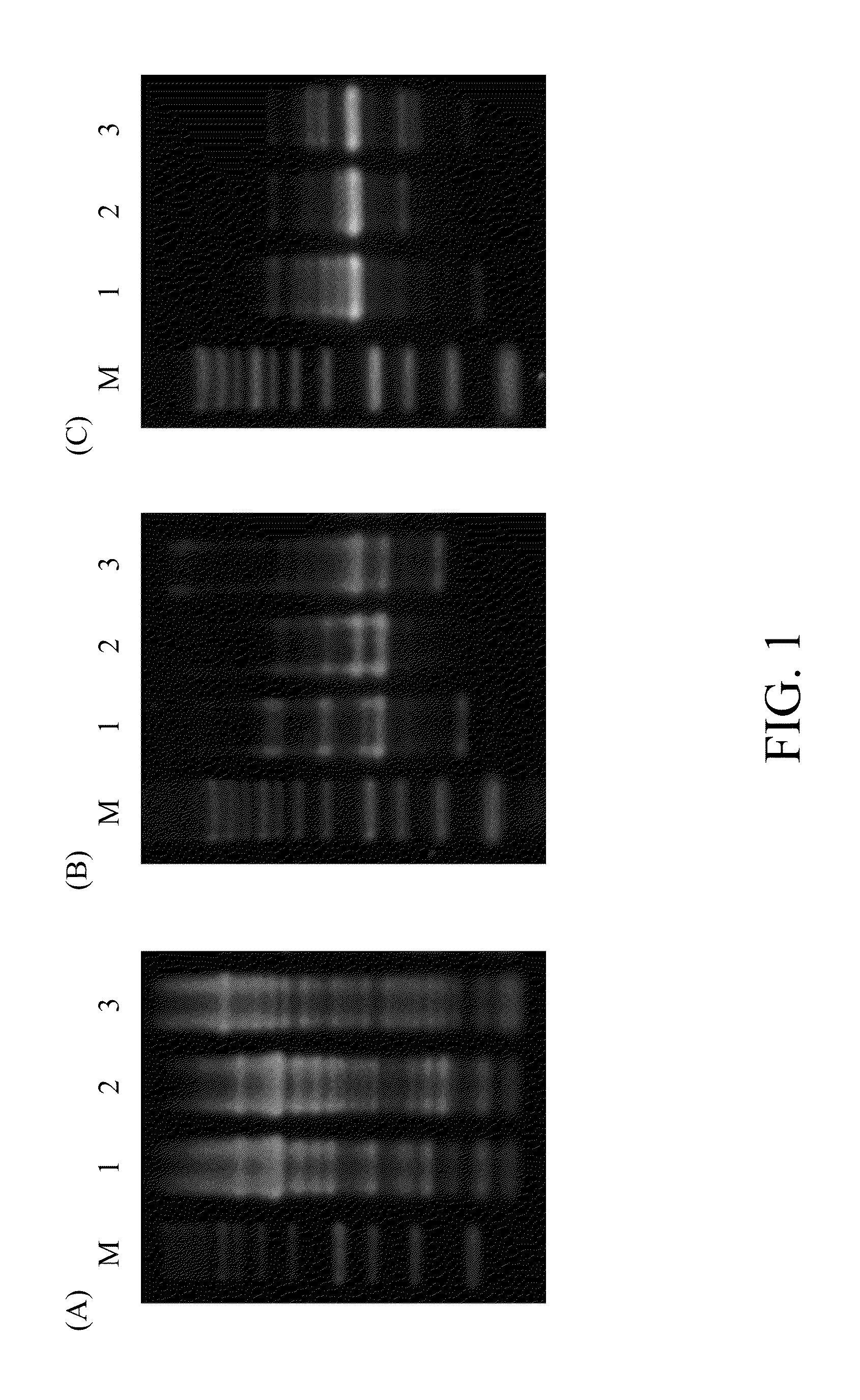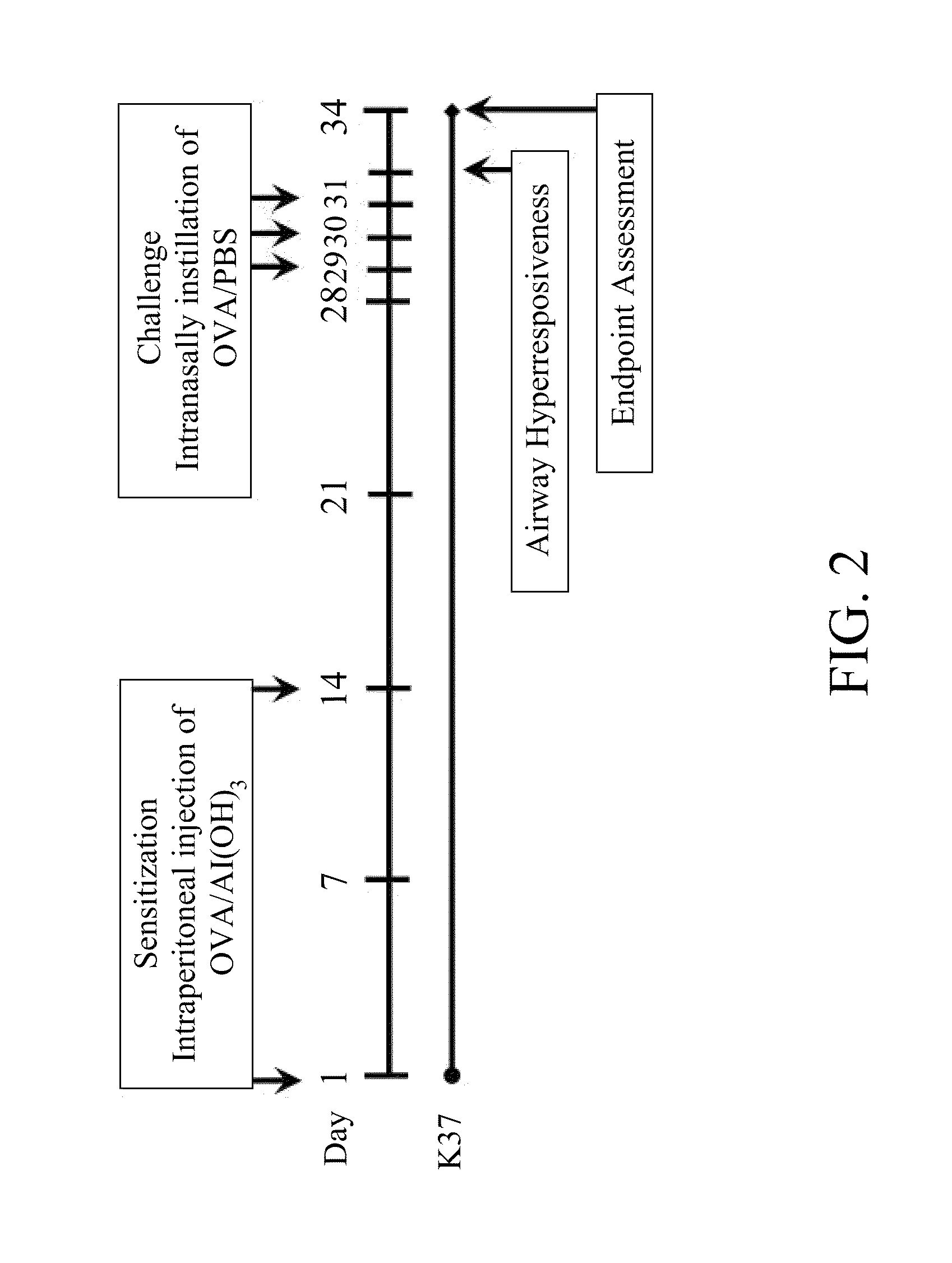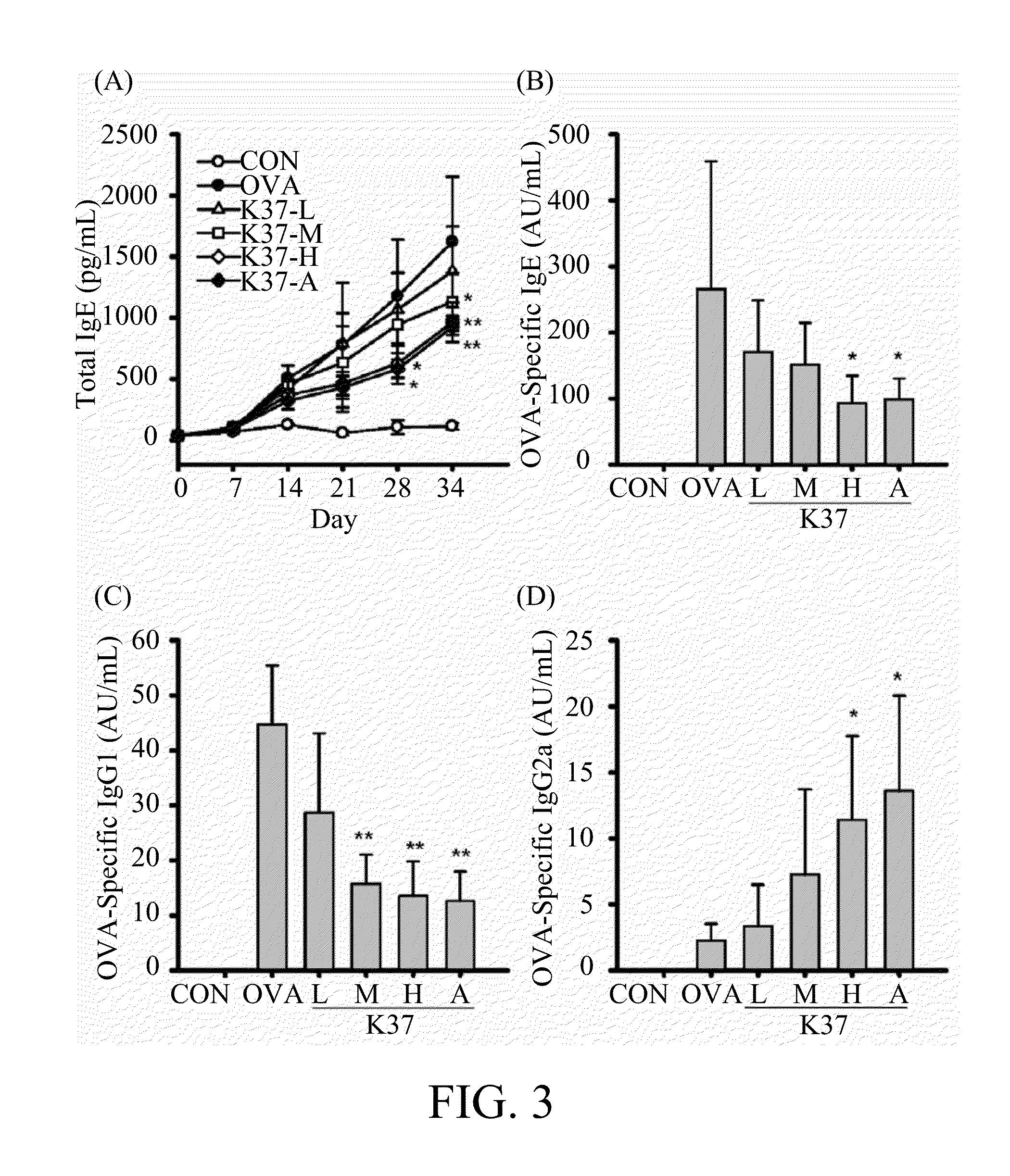Lactic acid bacterium having immunomodulatory and Anti-allergic effects and pharmaceutical composition containing the same
a technology of lactic acid bacteria and anti-allergic effects, which is applied in the field of lactic acid bacterium strains with immunomodulatory and antiallergic effects, can solve the problems of affecting the individual's life quality and becoming a medical burden on the society, and achieve the effect of il-4
- Summary
- Abstract
- Description
- Claims
- Application Information
AI Technical Summary
Benefits of technology
Problems solved by technology
Method used
Image
Examples
example 1
Isolation and Genetic Typing of Lactobacillus plantarum Subsp. plantarum K37
[0025]Lactobacillus plantarum subsp. plantarum K37 (hereinafter referred to K37) was isolated from fu-tsai, traditional fermented mustard products of Taiwan. To identify species of K37, a combined use of 16S rDNA and pheS sequences was performed. 16S rDNA (SEQ ID NO: 1) and pheS (SEQ ID NO: 2) from K37 were analyzed by direct sequencing of about 500 nucleotides of PCR-amplified product. Genomic DNA extraction, PCR mediated amplification, purification of the PCR products, and sequencing of the purified PCR products were carried out, accordingly.
[0026]The resulting sequence was put into the alignment software provided online by the National Center for Biotechnology Information (NCBI) (http: / / www.ncbi.nlm.nih.gov / ), aligned manually and compared with representative 16S rDNA or pheS sequences of organisms belonging to the Lactobacillus, respectively. For comparison, 16S rDNA and pheS sequences were also obtained...
example 2
Identification of the Bacterial Strains Using PCR-Fingerprinting
[0030]The PCR-fingerprinting profiles of K37 and the other two Lactobacillus plantarum type strains were compared. PCR was carried out under the condition indicated in Table 2. DNAs extracted from these strains were used as templates. The obtained amplification products were electrophoresed and the patterns were compared as shown in FIG. 1A to FIG. 1C, in which primers represented by SEQ ID NO: 3 / NO: 4 (FIG. 1A), NO: 5 (FIG. 1B) and NO: 6 (FIG. 1C) were used.
TABLE 2Composition of the PCR reaction solution (25 μl)ComponentVolumeddH2O17.9 μl 10X PCR Buffer2.5 μldNTP Mix (2.5 mM)2.0 μlMgCl2 (25 mM)1.0 μlprimer0.4 μlrTaq0.2 μlDNA template (10 μM)1.0 μl
PCR Conditions:
[0031]94° C., 2 min.; 5 cycles (94° C., 30 sec.; 36° C., 1 min.; 72° C., 1.5 min.); 30 cycles (94° C., 20 sec.; 36° C., 30 sec.; 72° C., 1.5 min.); 72° C., 3 min.
[0032]As shown in FIG. 1A to FIG. 1C, Lane M represents DNA ladder (250-10000 bp); Lane 1 represents...
example 3
Analytical Profile Index (API) Typing
[0033]Sugar utilization for K37 used in the present invention was investigated using API50CHL kit (bioMerieux, France), and the results are shown in Table 3. The fermentation test indicates that K37 harbor a biochemical property similar to Lactobacillus plantarum subsp. plantarum.
TABLE 3Results of Fermentation Testacarbohydrates substrateK37 (DSM 27445)CONTROL−Glycerol−Erythritol−D-Arabinose−L-Arabinose+D-Ribose+D-Xylose−L-Xylose−D-Adonitol−Methyl-β-D-Xylopyranoside−D-Galactose+D-Glucose+D-Fructose+D-Mannose+L-Sorbose−L-Rhamnose+Dulcitol−Inositol−D-Mannitol+D-Sorbitol+Methyl-α-D-mannopyranoside+Methyl-α-D-glucopyranoside−N-Acetyl glucosamine+Amygdalin+Arbutin+Esculin ferric citrate+Salicin+D-Cellobiose+D-Maltose+D-Lactose (bovine origin)+D-Melibiose+D-Saccharose (sucrose)+D-Trehalose+Inulin+D-Melezitose+D-Raffinose+Amidon (starch)−Glycogen−Xylitol−Gentiobiose+D-Turanose+D-Lyxose−D-Tagatose−D-Fucose−L-Fucose−D-Arabitol−L-Arabitol−Potassium glucona...
PUM
| Property | Measurement | Unit |
|---|---|---|
| Composition | aaaaa | aaaaa |
| Acidity | aaaaa | aaaaa |
Abstract
Description
Claims
Application Information
 Login to View More
Login to View More - R&D
- Intellectual Property
- Life Sciences
- Materials
- Tech Scout
- Unparalleled Data Quality
- Higher Quality Content
- 60% Fewer Hallucinations
Browse by: Latest US Patents, China's latest patents, Technical Efficacy Thesaurus, Application Domain, Technology Topic, Popular Technical Reports.
© 2025 PatSnap. All rights reserved.Legal|Privacy policy|Modern Slavery Act Transparency Statement|Sitemap|About US| Contact US: help@patsnap.com



